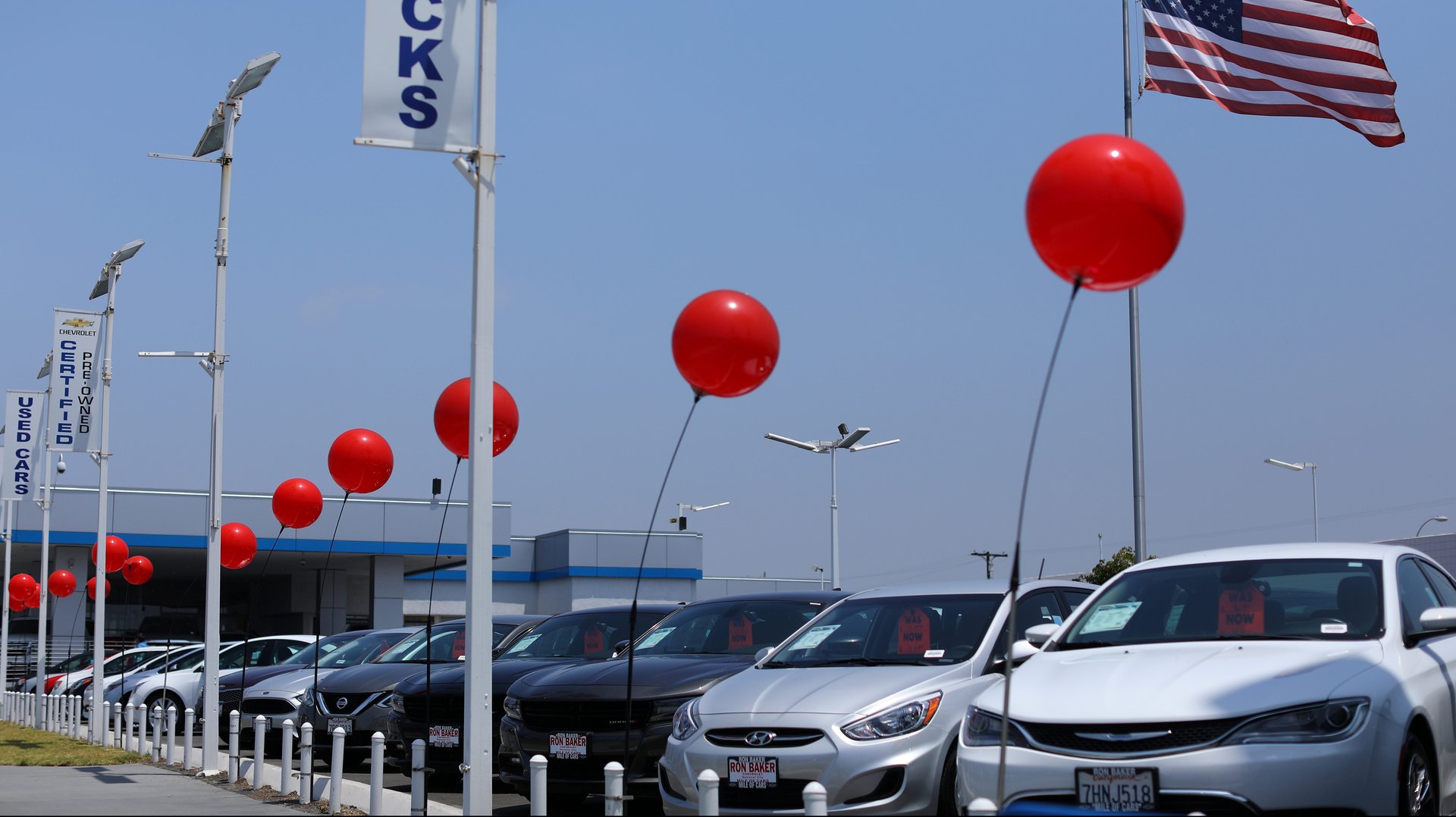Why US used-car prices went up 10% in a month
Used car prices are booming in the US. They jumped 10% from March to April, the biggest spike since 1953, when the government started collecting data. Overall consumer prices rose 0.8%, a bigger increase than expected, according to the latest data from the Bureau of Labor Statistics.


Used car prices are booming in the US. They jumped 10% from March to April, the biggest spike since 1953, when the government started collecting data. Overall consumer prices rose 0.8%, a bigger increase than expected, according to the latest data from the Bureau of Labor Statistics.
But the pop in prices is not necessarily an immediate cause for concern for inflation hawks worried that the trillions of dollars the government has pumped into the economy will overheat it. What’s happening in the used-car market sheds light on why.
The pandemic strained supply chains
Americans are starting to travel around again as pandemic restrictions ease, and the extra demand for cars is hitting at a time when supply is tight. Car production has been sputtering due to Covid-19. Many manufacturing plants shut down early on in the pandemic as governments struggled to contain the virus. And although car makers have been reopening their assembly lines since then, they have been slowed by a variety of supply chain constraints.
A key snag has been the ongoing shortage of computer chips, which is creating delays and prompting another round of plant closures.
With fewer new cars in the market, US consumers have been turning to used-car lots, driving prices higher.
The economy is revving up
To be sure, rising prices are also a reflection of the economic recovery—and the economic stimulus. Americans are spending more, resulting in higher prices for all kinds of products, from food to clothes. But that doesn’t mean inflation is about to get out of control. April’s price increases should be looked at in the context of the sharp drops at the beginning of the pandemic. Those kinks should be ironed out as time goes by.
The same is true for the supply chain constraints that are pushing prices higher. In fact, a big chunk of April’s overall increase—more than a third—can be attributed to the rising prices for used cars. Once manufacturers restock supplies of new cars, demand for used cars should wane and prices should go down.
Many economists, including officials at the US Federal Reserve, are expecting that will be the case for prices in general sooner rather than later. After the release of the inflation report, Fed vice chair Richard Clarida said he expects prices to keep rising for a few months before easing by the end of the year. “I expect inflation to return to—or perhaps run somewhat above—our 2% longer-run goal in 2022 and 2023,” he added.